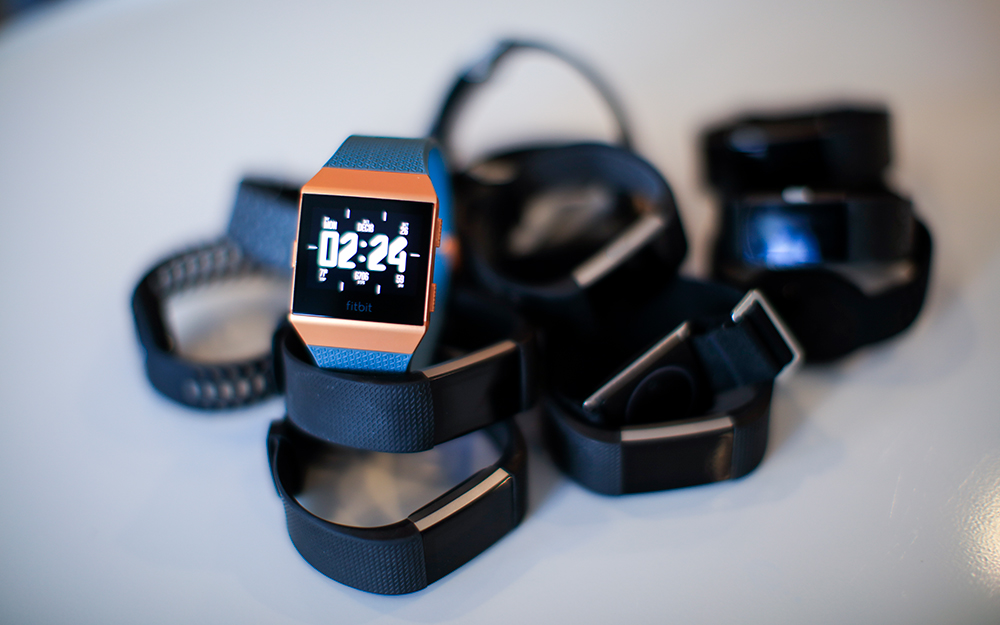Cedars-Sinai Magazine
Wearable Wisdom: How to Use Devices in Your Healthcare Routine
Aug 09, 2024 Jeremy Deutchman

Glance around any office, supermarket, movie theater or restaurant, and the fitness trackers and smartwatches adorning wrists are increasingly hard to miss.
In fact, according to a study that was partially funded by the National Heart, Lung and Blood Institute, almost 1 in 3 Americans use a wearable device to track their health and fitness. Once the province of early adopters and hobbyists, these devices have gone mainstream as critical tools for optimizing wellness.
“Fitness-tracking technology is getting better all the time, and more and more people are finding ways to make it a part of their everyday lives,” said Raj Khandwalla, MD, director of Digital Therapeutics at the Smidt Heart Institute at Cedars-Sinai.
Heart Rhythm Heroes
Integrating data from wearables into a care plan—knowing what to track and when to report findings to a medical professional—requires an understanding of which metrics are truly meaningful. By focusing on the actionable intelligence that a device can yield, individuals and their physicians can work together to identify health challenges and devise a plan to address them.
“Smartwatches can be incredibly useful,” Khandwalla said. “For instance, many of them have an electrocardiogram (EKG) function. While it’s important to note that smartwatches can’t detect a heart attack, they are becoming quite sophisticated in identifying certain kinds of arrhythmias, especially atrial fibrillation (AFib), which can increase risk of stroke.”
The key is maintaining awareness that the technology is not yet mature. These emerging tools have a lot of promise, but they also still have a long way to go."
— Dr. Raj Khandwalla
People become more susceptible to AFib as they age, particularly if they have high blood pressure or uncontrolled diabetes, said Janice Ribaudo, MD, a Cedars-Sinai family medicine physician.
“For those folks, wearing a smartwatch can be a game changer because it can assist with medical diagnosis,” she said. “If we have data from a smartwatch showing that a patient may be having bouts of AFib, it can often help us in finding cryptogenic strokes, whose causes are obscure or of unknown origin.”
It's essential to remember that a smartwatch’s EKG function is not a substitute for an in-person evaluation.
“An Apple Watch only measures the equivalent of one EKG lead. In the doctor’s office, we do a 12-lead EKG that looks at electrical conduction in the heart across 12 different vectors,” Ribaudo said. “So, while smartwatches can be beneficial, they are by no means comprehensive.”
Numbers to Watch
Activity monitoring is another area where smartwatches shine.
Using these devices to track steps is very common, and a recent study in the Journal of the American College of Cardiology found that people who walk 8,000 steps per day reduce their risk of heart attack by around 50% and lower their risk of dying by more than 50%. The median follow-up in this pooled analysis of 12 studies was 77.8 months, or 6.5 years.
“Keeping track of how much we move around during the day can literally save our lives,” Khandwalla said.
Another measure that may be worth watching on a fitness tracker is heart rate—although Khandwalla issued an important caveat.
“You want to look at the heart rate trend,” he said. “Heart rate in and of itself is usually not that useful for physicians. If you’re feeling frequent palpitations, but your heart rate is in the normal range, that’s probably a good sign. Conversely, if your rate is often above 120 beats per minute for more than a minute while you’re at rest, you might want to alert your doctor.”
Some athletes are turning to GPS-enabled vests to track a wide variety of fitness indicators. While these devices can provide highly accurate data (including heart rate, speed and distance traveled), they have limited ability to pinpoint serious medical issues.
“The vests are great for analyzing athletic performance, but they can’t detect a blocked coronary artery or a heart attack,” Khandwalla said.
Emerging Potential
Occasionally, physicians will outfit their patients with a Zio patch, which is an FDA-approved wearable developed by a company called iRhythm that is available by prescription for detecting and diagnosing irregular heart rhythms. Ribaudo envisions a future in which patients can buy something similar, put it on and have their health data recorded into an app that allows their doctor to access the data remotely.
“We’re not there yet, but I think that’s where we’re headed, and it would be tremendously valuable,” she said.
For now, everyday consumers must content themselves with the devices that are currently commercially available—and they should be sure to put any resulting data in context.
“Many of the things these devices purport to track, such as peak oxygen consumption, haven’t been validated in published clinical trials,” Khandwalla said. “The key is maintaining awareness that the technology is not yet mature. These emerging tools have a lot of promise, but they also still have a long way to go.”
Read: How to Get Better Sleep




